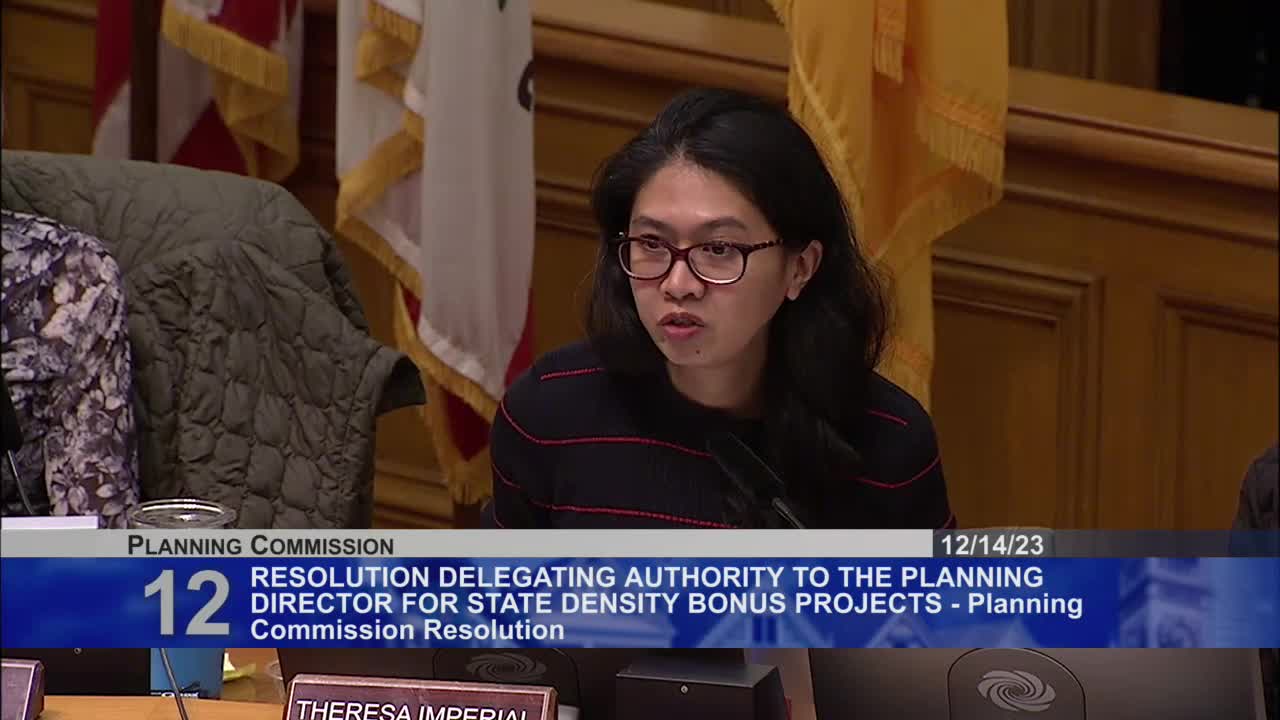Commissioners Vote 4-3 on Resolution Amid Symbolic Debate Over Housing Issues
December 14, 2023 | San Francisco City, San Francisco County, California

This article was created by AI summarizing key points discussed. AI makes mistakes, so for full details and context, please refer to the video of the full meeting. Please report any errors so we can fix them. Report an error »

In a recent San Francisco government meeting, city commissioners engaged in a heated discussion regarding a resolution that has significant implications for housing policy and tenant protections. The meeting highlighted the emotional weight of decisions surrounding housing, as commissioners expressed their frustrations and hopes for meaningful change.
The primary focus of the meeting was a resolution that some commissioners viewed as symbolic rather than substantive. Commissioner Ruiz articulated a sense of powerlessness in the current situation, emphasizing the need for genuine understanding and collaboration among commissioners. Despite his emotional response, he indicated that he would vote against the resolution, reflecting a broader sentiment that the current measures may not adequately address the pressing housing issues facing the city.
The resolution ultimately passed with a narrow vote of 4 to 3, with Commissioners Ruiz, Imperial, and Moore opposing it. This division underscores the ongoing tensions within the commission regarding how best to tackle housing challenges. Commissioner President Tanner, who supported the resolution, called for a web page to be created that would list ongoing housing projects, aiming to enhance transparency and accountability in the city’s housing initiatives.
Following the resolution vote, the meeting transitioned to an informational presentation on tenant protections, prompted by President Tanner's earlier request. This presentation is expected to provide critical insights into the current state of tenant rights and protections in San Francisco, particularly in light of recent rezoning efforts tied to the city's housing element implementation.
As the city grapples with increasing housing demands and the need for effective tenant protections, the discussions from this meeting reflect a community at a crossroads. The decisions made by the commission will have lasting impacts on residents, and the call for more robust tenant protections remains a pressing issue that will likely continue to dominate future meetings. The next steps will involve further exploration of these protections and how they can be effectively integrated into the city’s housing policies.
The primary focus of the meeting was a resolution that some commissioners viewed as symbolic rather than substantive. Commissioner Ruiz articulated a sense of powerlessness in the current situation, emphasizing the need for genuine understanding and collaboration among commissioners. Despite his emotional response, he indicated that he would vote against the resolution, reflecting a broader sentiment that the current measures may not adequately address the pressing housing issues facing the city.
The resolution ultimately passed with a narrow vote of 4 to 3, with Commissioners Ruiz, Imperial, and Moore opposing it. This division underscores the ongoing tensions within the commission regarding how best to tackle housing challenges. Commissioner President Tanner, who supported the resolution, called for a web page to be created that would list ongoing housing projects, aiming to enhance transparency and accountability in the city’s housing initiatives.
Following the resolution vote, the meeting transitioned to an informational presentation on tenant protections, prompted by President Tanner's earlier request. This presentation is expected to provide critical insights into the current state of tenant rights and protections in San Francisco, particularly in light of recent rezoning efforts tied to the city's housing element implementation.
As the city grapples with increasing housing demands and the need for effective tenant protections, the discussions from this meeting reflect a community at a crossroads. The decisions made by the commission will have lasting impacts on residents, and the call for more robust tenant protections remains a pressing issue that will likely continue to dominate future meetings. The next steps will involve further exploration of these protections and how they can be effectively integrated into the city’s housing policies.
View full meeting
This article is based on a recent meeting—watch the full video and explore the complete transcript for deeper insights into the discussion.
View full meeting
